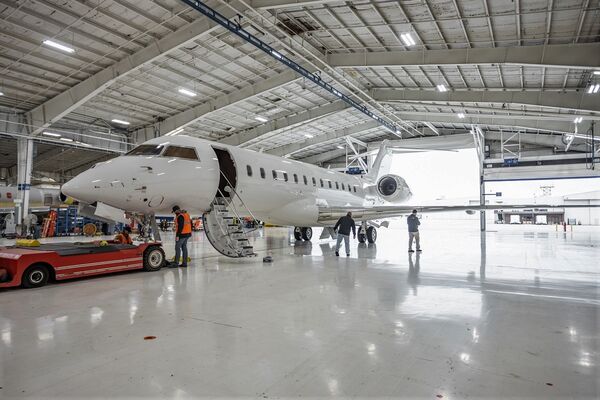
The first of three Global 6000 business jets seen in Kansas in November 2022, ahead of its conversion with PEGASUS SIGINT mission systems. (Bombardier)
The Global 6000 business jet-based Persistent German Airborne Surveillance System (PEGASUS) has passed its critical design review (CDR), prime contractor Hensoldt announced on 16 November.
The CDR, which was conducted by representatives of the Bundeswehr, was successfully completed two years after Hensoldt was contracted to develop the capability based on its Kalaetron signals intelligence (SIGINT) system. Lufthansa Technik is the programme partner, having procured the green airframe from Bombardier in Kansas, in the US, ahead of mission system integration in Hamburg, Germany.
“In the CDR, representatives of the Bundeswehr, both from the public customer and the future user, examined the design of the SIGINT components of the PEGASUS weapon system. In a large number of individual presentations, the customer was given a detailed presentation of the implementation planning for its extensive requirements. At the same time, the progress of the overall project was communicated in various software and hardware demonstrations,” Hensoldt said. “Subsequently, the subcontractor Lufthansa Technik, Hamburg, gave an impressive presentation on the planned integration of the resulting reconnaissance system into the aircraft and the associated conversion measures.”
Germany is acquiring three Global 6000-based PEGASUS systems, having cancelled earlier plans to host the SIGINT capability on both the Northrop Grumman Global Hawk-derived RQ-4C Triton high-altitude long-endurance (HALE) unmanned aerial vehicle (UAV) and the Global Hawk-derived RQ-4E Euro Hawk.
The Luftwaffe expects to use the PEGASUS to provide NATO with a SIGINT capability from 2025. Janes
Looking to read the full article?
Gain unlimited access to Janes news and more...







